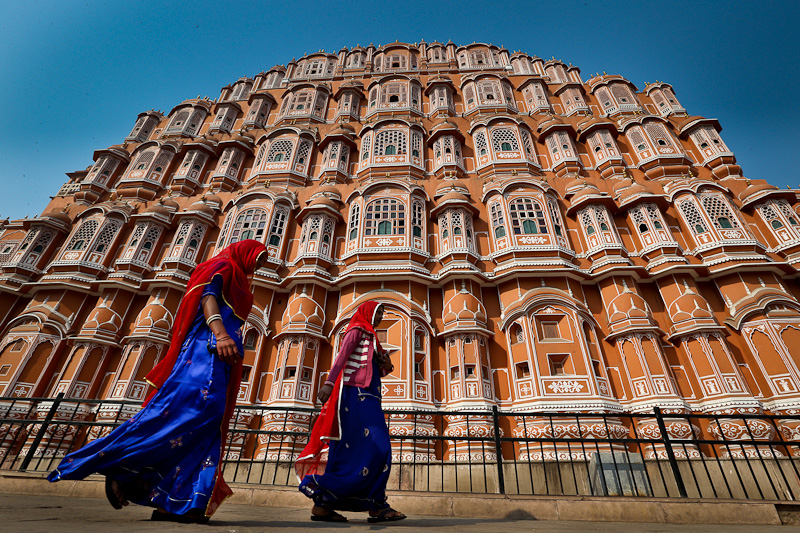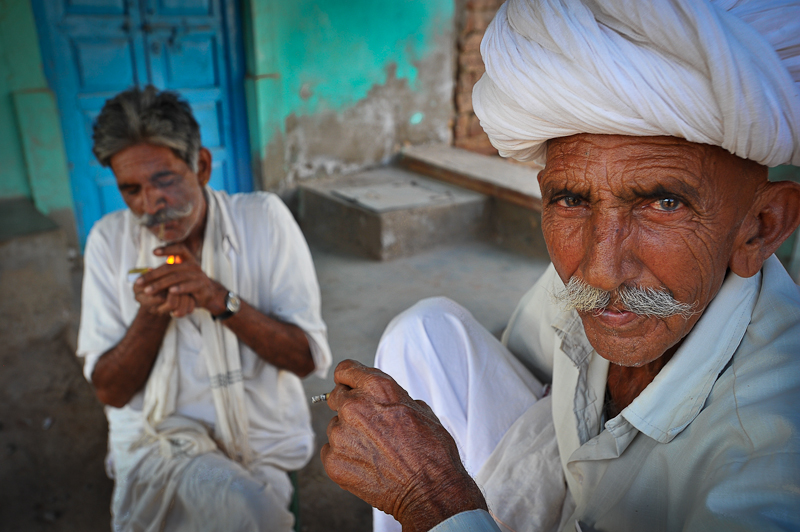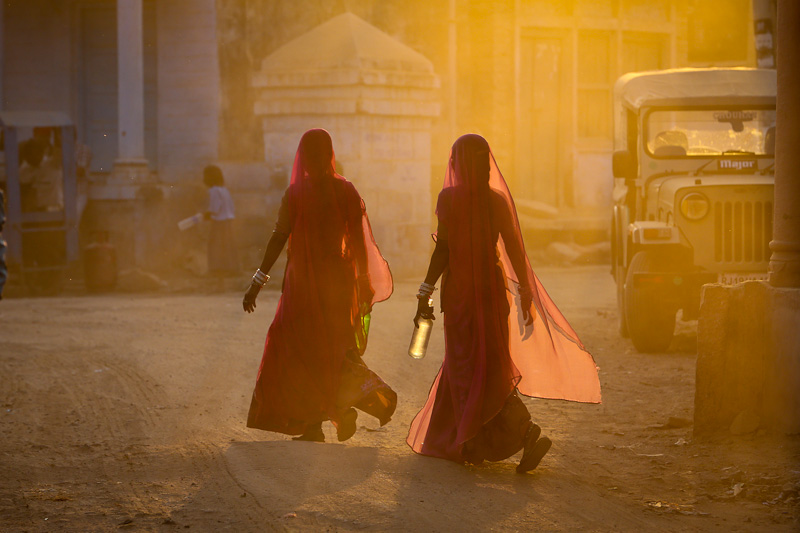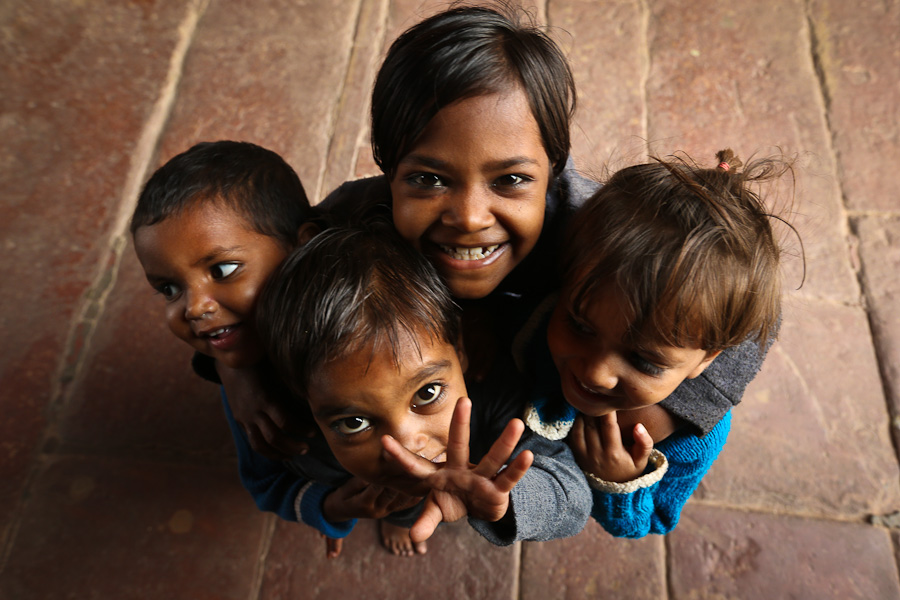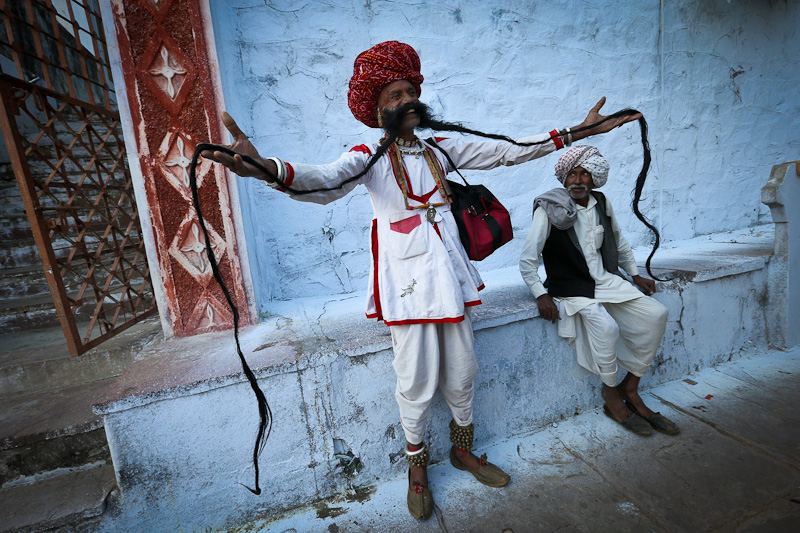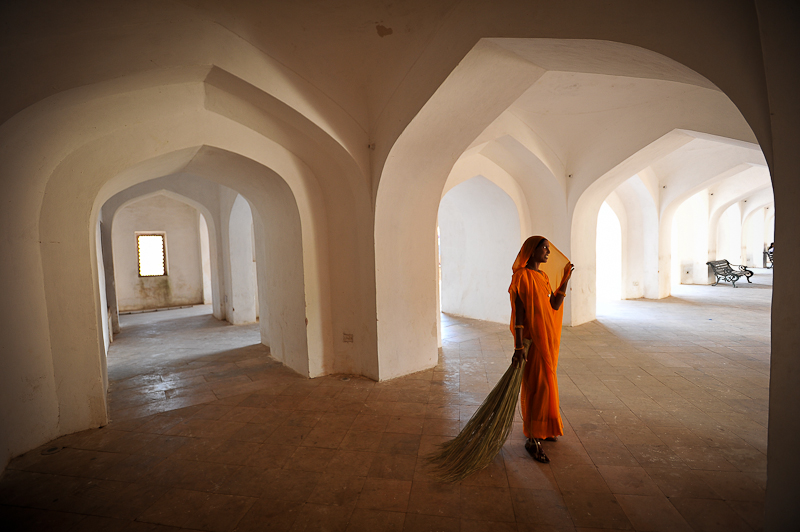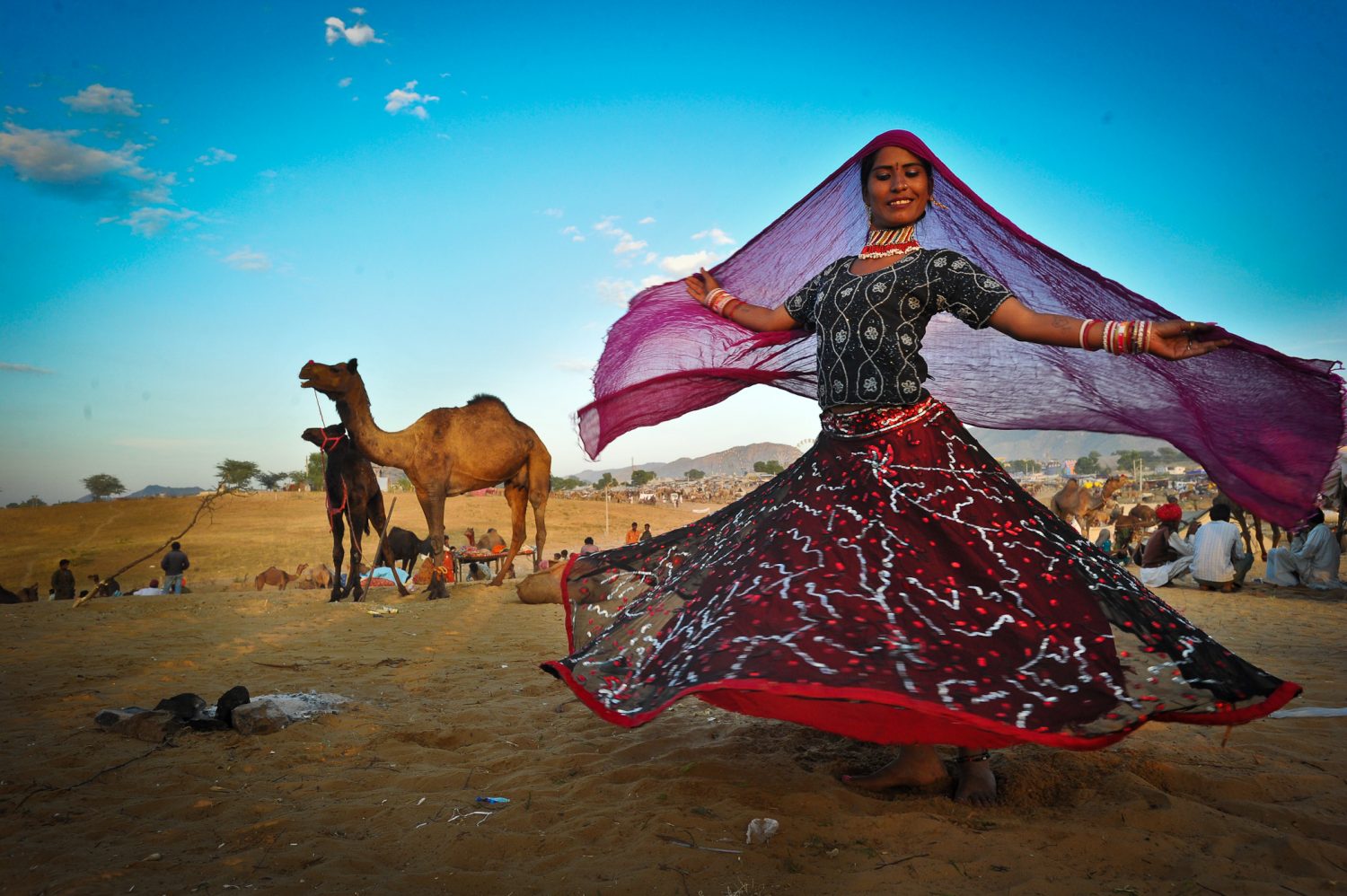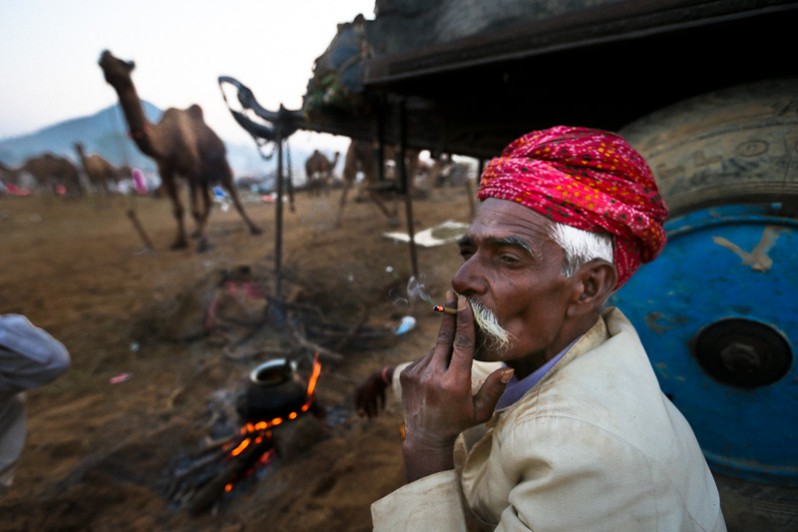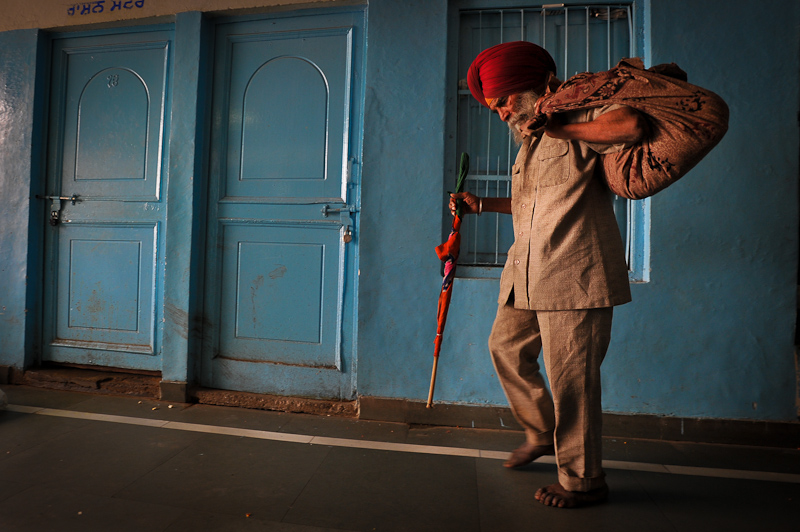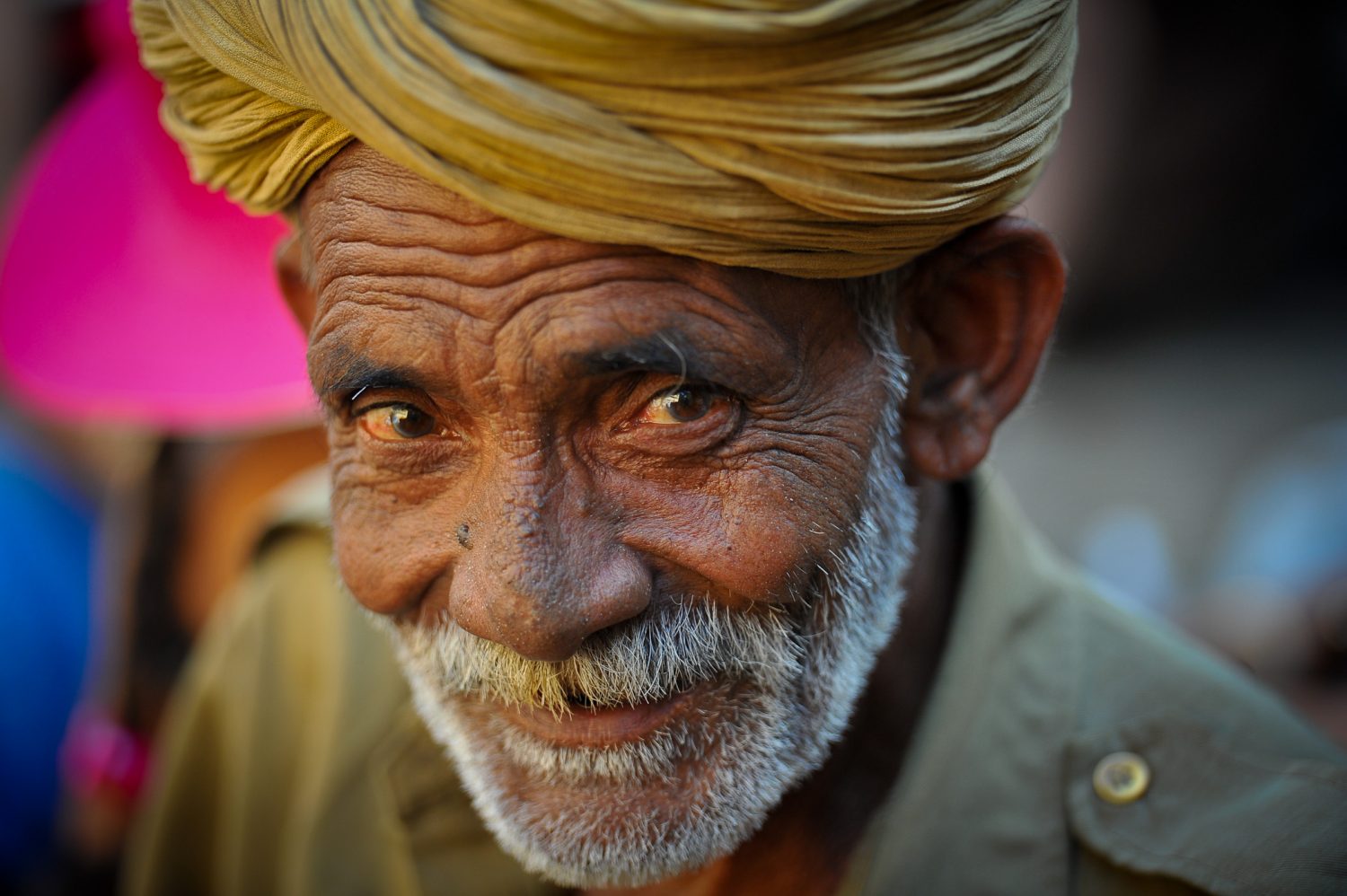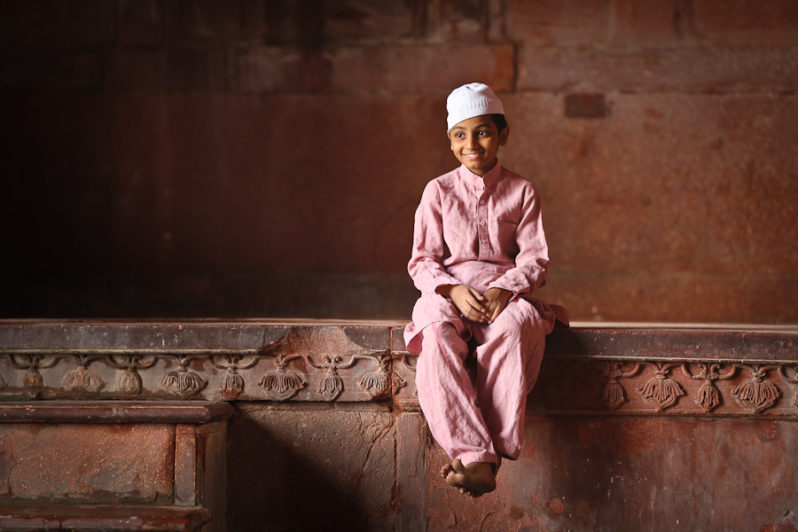Overview
During the first full moon of November, India’s Pushkar Camel Fair, Asia’s largest livestock market springs to life in the sleepy, picturesque, lakeside town of Pushkar. An ancient religious town in the Thar Desert of Rajasthan, provides an almost surreal backdrop for this unique event. Photographing Pushkar Camel Fair is a once-in-a-lifetime event. Few photo opportunities can match the volume or diversity of image possibilities, it’s almost impossible to bring enough film or memory cards to capture it all. You’ll feel as though you’ve stepped back in history as you walk among herders and their encampments among the rolling sand dunes.
The Pushkar Fair is, itself, is enough to justify an expedition, but on this trip, we will also be visiting other fascinating destinations such as Delhi, Jaisalmer, Jaipur, and Jodhpur. In Delhi, the heartbeat of Northern India, we’ll have time to explore ancient forts, wander the markets, and experience the history surrounding both the old and new sections of the city.
Jaipur is known as the Pink City because of the extensive use of the locally abundant pink stone, which was painted in honor of the visit of the royal consort of Queen Victoria. Jaipur thrills the soul with its massive forts, magnificent palaces, exquisite temples, and lush gardens.
Sitting at the edge of the Thar Desert, Jodhpur is dominated by a massive fort in the middle of town. Jodhpur is affectionately referred to as the “Blue City” because of the indigo-colored houses lining the fascinating winding streets of the old town. We’ll have a chance to photograph the homes from the mighty Mehrangarh Fort, high above the buzzing city.
Jaisalmer, rising out of the heart of the Great Indian Desert is the quintessential India of your dreams. With the oldest living fort in the world, the city is a mass of intricately carved buildings, facades, and elaborate balconies. Its temple, fort, and palaces are all built of beautiful yellow stone. Exploring this fascinating city could be a photo destination in and of itself.
Located far from the cities and paved roads, our luxury encampment at Manvar allows us to enjoy the peace and tranquility of the Indian desert while being in close proximity to fabulous photo opportunities. In the evening after a dusty jeep safari, we retreat to Manvar to enjoy more delicious Indian cuisine and wonderful culture and dance performances under the stars.
India is a fascinating country with incredible photo opportunities and wonderfully warm people, but it can be emotionally and physically exhausting. India challenges you with extremes: one minute, India will cradle you in comfort, the next it will smack you in the face with heat and poverty. During the day our group will be “out in the thick of it” not just shooting the action, but being part of the action.
During most nights, we’ll be able to relax and recover from the day’s excitement in clean, comfortable hotels that remind us that we are in India rather than a US city. Our hotels are rich in atmosphere, and many are photo shoots in themselves. We’ll dine at restaurants that provide delicious, healthy, flavorful meals and sometimes even sip tea from roadside kitchens.
India is a destination that is best suited for truly adventurous, flexible and enthusiastic travelers; whose desire is to experience off-the-beaten-track places and come home with images and stories to ponder for decades.
Itinerary
*SUBJECT TO CHANGE*
Day 1: Sunday, Nov. 3 Upon arrival from your flight to Delhi, you will be transported from the airport to our hotel in downtown Delhi. We’ll have an orientation meeting and go to dinner. Overnight in Delhi.
Day 2: Monday, Nov. 4 After breakfast, we proceed on a guided tour of New Delhi, visiting such sights as the Qutab Minar – 237 feet high and one of the most perfect towers in the Persian world. In the afternoon we’ll cross over to Old Delhi to photograph interesting mosques, monuments, and forts relating to its checkered history as the capital of Muslim India, between the 17th and 19th centuries. The tour includes a visit to the Jamma Mosque, built in 1650. During the tour, you’ll have the opportunity to ride on cycle rickshaws. This is a great way to explore and photograph the hustle and bustle as well as the color of the narrow winding streets bursting with people and pavement shops selling all description of goods. We’ll spend the night in Delhi.
Day 3: Tuesday, Nov. 5 After breakfast drive to Agra for 4 hours by Yamuna expressway. On arrival, check-in to the hotel. Afternoon visit Agra Fort which is another dimension to the city that attracts tourists in hordes. Built by Akbar in Red Sandstone when he was through with the consolidation of his power after accession to power in 1654, Agra Fort worked both as a military strategic point as well as the royal residence.
Many of the palaces inside the fort were later added by next generations of Mughal Emperors like Jahangir and Shahjahan. In the evening, visit and photograph Taj Mahal at sunset. Taj Mahal is best experienced at sunset & sunrise when the light reflects off the marble to give it a magnificent hue. The Taj Mahal was built by Emperor Shah Jahan over a period of 17 years from 1632, in memory of his beloved late wife Mumtaz Mahal. A World Heritage site, it is one of the wonders of the modern world and you will be enthralled with its ethereal beauty. Overnight in Agra.
Day 4: Wednesday, Nov. 6 Early morning we’ll again visit and photograph Taj Mahal at Sunrise. Late morning we’ll drive to Jaipur for 5 hours. En route visit Fatehpur Sikri. 40 km (1 hour) before Agra, lies the beautiful and deserted medieval city built by Akbar the Great in the 16th century to serve as the capital of his vast empire. Akbar built the city to celebrate the birth of an heir (the future Emperor Jehangir). After 16 years, there was not enough water to support the population, so the capital was moved back to the Red Fort in Agra. The dryness that plagued Akbar and forced him to abandon his dream city is what has perfectly preserved this moment of Mughal history and exquisite memorial to the genius of Akbar for our admiration today.
Continue drive to the city of Jaipur. The people here are known to be dynamic and colorful, and a walk through the lanes here is a walk through history. Here pink turbans jostle with saffron odhinis (ladies’ scarves), and camel buggies and elephants are as commonly found as cars and buses. In the evening we’ll go for a walking tour of Jaipur and its colorful bazaars. Overnight in Jaipur.
Day 5: Thursday, Nov. 7 In the morning we’ll visit and photograph Amber Fort, the hilltop fortress/palace 7 miles north of Jaipur, which was the former capital of the royal Jaipur. We’ll also visit the Hawa Mahal or Palace of the Winds, a five-story structure of pink sandstone with delicately honeycombed windows overlooking the main street of the old city. In the afternoon we’ll go on a tour of the Observatory and photograph the fascinating structures. Overnight in Jaipur.
Day 6: Friday, Nov. 8 In the morning we’ll drive to Pushkar for three hours, where we’ll check into our Swiss Tents (with private flush toilets, running cold water and hot water at set times and several hours of electricity each evening). We’ll have two days here to witness the amazing spectacle called Pushkar Camel Fari. There will be plenty to photograph the countless camels ambling their way across the golden sands of Rajasthan, horses marching towards the site of the fair with their masters and an assemblage of numerous cows and sheep, men with large colorful turbans, women wrapped in exquisite jewelry from head to toe and children dressed in their colorful traditional attire. Overnight in Pushkar.
Day 7: Saturday, Nov. 9 We’ll have the whole day to wander and photograph Pushkar. The fair is initially devoted to the trade of camels, sheep, horses, and cows. Their owners, dressed in colorful attire use all of their persuasive skills to sell them at the most competitive prices. The festival also offers an opportunity to purchase a huge variety of jewelry items. There are also stalls where colorful clothing is sold as well as tattoo shops, jugglers and fire dancers. As the fair nears its climax, various competitive events are held, such as camel races, musical chairs, and beauty contests. All in all, it makes for a photographer’s delight. Overnight in Pushkar.
Day 8: Sunday, Nov. 10 In the morning we’ll drive to Jodhpur. Upon arrival, we’ll check into the legendary Ajit Bhawan Hotel. Built exclusively for Majaraja Ajit Sing, it is vibrantly alive with the personalized hospitality provided by the late Maharaja’s family who still lives there. In the afternoon we’ll have a guided tour of the Blue City of Jodhpur. We’ll visit the massive fort, royal palaces, the armory and Jaswant Thada – the Royal Crematorium. Overnight in Jodhpur.
Day 9: Monday, Nov. 11 In the morning we’ll have a sunrise shoot of the amazing Blue City. After some free time, in the afternoon we’ll photograph and explore another part of the city. Overnight in Jodhpur.
Day 10: Tuesday, Nov. 12 In the morning we’ll drive through the desert country to Jaisalmer, stopping along the way at roadside tea shops for impromptu photo sessions or at a school if class is in session. Depending on road conditions, we may arrive in Jaisalmer early enough in the afternoon to sneak a quick look at the Jaisalmer Fort, with its exquisite carving on yellow sandstone. The Golden City of Jaisalmer is a testimony of a by-gone era. At sunset, we’ll move from the fort to the outskirts of town to photograph a golden sunset at the nearby Cenotaphs. Overnight in Jaisalmer.
Day 11: Wednesday, Nov. 13 In the morning we’ll have a sunrise shoot of the Jaisalmer Fort then tour the residential portions of the fort where one-third of the population of the old city lives. The design of the houses and the lifestyles of the people occupying them remain as they were a couple of centuries back. We’ll also witness the ornate havelis of this ancient citadel. Later in the day, we go on an excursion to the fascinating desert village dunes of Khuri.
The friendly locals will invite us into their simple mud homes with earthen floors and no electricity or running water. Here the women walk two kilometers to the well and carry the water home on their heads. It is here that we’ll explore the desert on camelback. We’ll photograph silhouettes of the camels in the desert with the backdrop of the setting sun. The stillness of the desert, the clear sky, local Rajasthani music, and the general atmosphere make the place a very romantic experience. Overnight in Jaisalmer.
Day 12: Thursday, Nov. 14 Today we wake up early to photograph sunrise over Gadisar Lake then return to our hotel for breakfast. After breakfast, we drive to Bikaner for six hours. An oasis town among scrub and sand dunes, Bikaner was founded by Rao Bika in 1488. It was once an important staging post on the great caravan trade routes and constituted a major centre of learning and wool trading The walled city retains a medieval air and sandstone architecture. The Junagadh fort is one of the best preserved in the country, with intricate murals and magnificent stone carvings. Afternoon visit the Junagadh Fort, which is unusual because other major forts of Rajasthan were built on hilltops, but this fort is built on the desert plain, surrounded by a moat. Overnight in Bikaner.
Day 13: Friday, Nov. 15Early morning drive to witness the ritual bathing at the Ghats at the Kolayat temple. Thousands of holy-men and local tribesmen gather here to take the ritual bath. This day is the day of Kartik purnima, the most holy time for an auspicious dip in the water. We continue drive to Manvar. Upon arrival, we check into our luxurious, permanent tents, located right in the heart of the Great Indian Thar Desert. Our accommodations offer a rare opportunity to enjoy Rajasthan’s desert life, culture, wildlife, and beauty. We’ll be treated to a sunset jeep safari and then a fireside cultural performance. Overnight at Manvar Camp.
Day 14: Saturday, Nov. 16After breakfast, we’ll drive to visit the Bishnoi Village, where centuries-old traditions still permeate the feudal lifestyles. We’ll witness an opium ceremony, a ritual by which guests are welcomed. Colorfully attired men and women carry on their chores and traditions in their mud-floored village huts. In the evening we’ll be treated to yet another memorable cultural performance of dance and music under the stars. Overnight at Manvar camp.
Day 15: Sunday, Nov. 17After breakfast, we’ll drive to Jodhpur airport for three hours to board the flight to Delhi. On arrival, will be internally transferred to the Delhi international airport where you’ll board your flights to home. Those who have flights out the following day will have the option to stay an extra night at a hotel in Delhi.
Or…… Optional Extension: Amritsar and Haridwar
Day 1 Ext: Sunday, Nov. 17 After return to Delhi, we’ll connect with an evening flight to Amritsar to begin the extension. Once in Amritsar, we’ll be transported to our hotel. Spend the night in Amritsar.
Day 2 Ext: Monday, Nov. 18 In the early morning we’ll visit and photograph the Golden Temple. The Golden Temple, also known as Sri Harmandar Sahib was initiated by the fourth Guru of Sikhs, Guru Ramdas Jee and completed in 1601 by his successor Guru Arjan Dev Jee. There is such a spiritual embodiment of the higher being that even the non-believer is seduced by the hypnotic melody of the Paath. After breakfast visit Jalian Wala Bagh, where, on April 13, 1919, 90 British Indian Army soldiers under the command of Brigadier General Reginald Dyer opened fire on an unarmed gathering of men, People pay homage to all the soldiers at this place. In the afternoon, drive 30 Kms up to the Wagah Border for “Change of Guards” ceremony held by Pakistani Rangers & Indian BSF. Overnight in Amritsar.
Day 3 Ext: Tuesday, Nov 19 After breakfast transfer to the airport to board the flight to Delhi and connecting flight to Dehradun. Upon arrival in Dehradun to Haridwar and check-in at our hotel, a beautiful heritage “Haveli” (mansion) situated on the banks of the Holy Ganga. This evening we walk across the bridge to witness the fascinating Ganga ‘Aarti’ (invocation). The golden reflection of floral diyas in the river Ganges is the most enchanting sight in the twilight during the Ganga aarti ceremony at the ghat. The synchronised chanting of prayers that takes place during the Aarti is a very uplifting experience. Overnight in Haridwar.
Day 4 Ext: Wednesday Nov. 20 After breakfast, we explore the unending list of attractions in Haridwar including Har-Ki-Pauri, several Hindu temples and ashrams, and the Daksh Mahadev Temple. Beyond the amazing architectural designs, it is the spiritual ambiance of these sacred spots that is so striking. Other important places we will try to visit are the Sapt Rishi Ashram, the Kanva Rishi Ashram, the Bharat Mata Temple, Maya Devi Temple, Bhimgoda, and Shanti Kunj. We’ll spend the night in Haridwar.
Day 5 Ext (Nov. 14): Thursday, Nov. 21 Morning is to walk across the bridge to witness Ganga and people with religious faith. After breakfast transfer to the Dehradun airport to board the flight for Delhi. Meeting & assistance upon arrival in Delhi airport and transfer to the international terminal for your onward flight.

